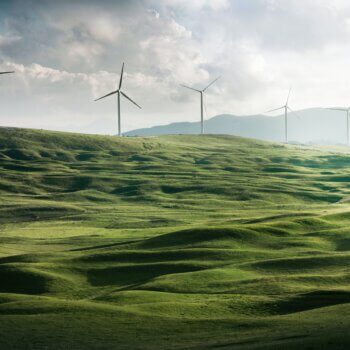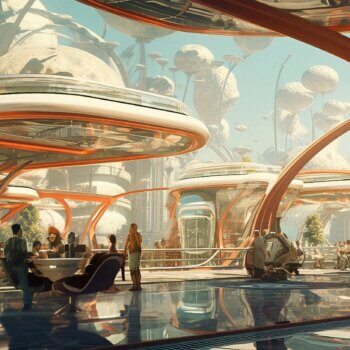Technology is an outgrowth of nature. The computer, the clock and the car are, in one sense, no different from the anthill, the beehive and the beaver dam. Each are creations of creatures – modifications of the environment, which in turn, modify the environment.
If ecology is “the scientific study of interactions among organisms and their environment,” then a technology ecology is the study of technology’s interactions with other technologies, with organisms and with the environment. So, why might that be important?
A Holistic View of Technology
W. Brian Arthur is a breakthrough thinker on technology. Even though he might not describe himself this way, you could say he’s at the forefront of technology ecology. One of the core themes in his book, The Nature of Technology: What It Is and How It Evolves, is that all technology is made up of combinations of other technological elements. Look inside a mobile phone, and you find scores of component technologies, each made possible by earlier innovations – a vast web of related technologies, some going very far back in time.
In his book, Arthur doesn’t use the term “holon,” but it does map nicely to his ideas. A holon is something that is simultaneously a whole and a part. Your heart is an individual organ and it is an integral part of your overall body. It is a whole and it is a part. The heart has its own component parts, each coming together as an emergent whole that is more than the sum of its parts. Just like your mobile phone.
My goal isn’t to give you a crash course on holons¹, but to help you see technological relationships in a more holistic way. Ecology is all about relationships after all – and so is a technology ecology.
Focus on the micro, and a technology holon is all about the components and how they come together into a new technological whole. Focus on the macro, and you see the relationship that a technology has with various industries, markets and economies, which is what Arthur does in the later parts of his book.
Planet-Changing
It’s this link to the macro that I find worth extending beyond industries, markets and economies and to the ecosystems on which they rely.
All technologies impact their surrounding environment in some way. It’s most obvious though in mining, forestry, farming and other resource extraction industries, where technology literally shapes the planet. Years ago, when flying in an airplane you’d look outside your window and see endless rectangles of farms below. Now, it’s mostly circles thanks to the rise of center-pivot irrigation systems.
The first waves of our planetary sculpting grew from the industrialization of extraction and transport technologies: bulldozers, freight trains, and giant harvesters. In the next wave, automation technologies will move out of the manufacturing sector and into the resource extraction sector, with things like automated precision farming machinery and agricultural robots, automated forestry equipment, and automated mining technologies.
How far we will go in reshaping our planet is really anyone’s guess at this point. We may well be at an infliction point where the geological era of the Anthropocene, in which human activity is the dominant factor in sculpting the planet, to a new era where the world is increasingly shaped by and for the running of machines. You might call it a “Machinacene,” or more actually, a “Syntheocene.”
There are early examples of lifeforms that similarly transformed the planet. Some two-to-three billion years ago, microbial mats covered the Earth and that, as a byproduct of their photosynthesis, generated such a massive volume of oxygen that they dramatically altered the composition of the planet’s atmosphere to what it is now today.
We humans aren’t (yet) operating at that level, but with time and the steady pace of innovation, it’s possible. Twenty-eight percent of the planet’s land mass is forested, another 21 percent is high mountains, tundra and deserts, but the remaining 51 percent of Earth’s non-ice-bound landmass is already modified by humans in the following ways:
Another way to view human impact on the planet is by separating naturally occurring flows of materials from those caused by human activities. Looking at a material like lead, for example, you would find that 332,000 tons are released into the environment each year as a result of human activity, compared to just 28,000 tons happening through natural processes. For a growing number of materials, we are now scaling beyond the natural rhythms of the planet:
The Nature of Technology
Technology is not some isolated machine that can be perfectly controlled. Technology is deeply interconnected with other technologies, with industries, organizations, markets, economies, and with its surrounding natural environment.
When we fail to see this last connection, we fail to see the full complexity of the planet as it hurdles toward a new reality that is deeply shaped by our tools. Is technology truly equivalent to a beaver dam or beehive? It doesn’t really matter. What does matter is that technology is structurally linked with the natural systems of the planet.
How we think about technology shapes how we build and use it. When we see it as something different and isolated from the natural world, we more easily fool ourselves into believing we can control it and the impact it has on our planet. Research on “coupled human and natural systems” shows just how wrong this is, and how complex feedback loops, like those we have with the planet, are full of non-linearity and surprises.
Technology is the cutting edge with which we shape the planet. As it becomes more complex and interconnected, it becomes less linear and less predictable. In other words, it starts to behave more like ecosystems in the natural world. This is the technology ecology, and its time is rapidly approaching.
¹ Ervin Laszlo’s book, The Systems View of the World, is an excellent primer on holons.





























